5 designer tips for decorating a windowless bathroom
No natural light? No problem.
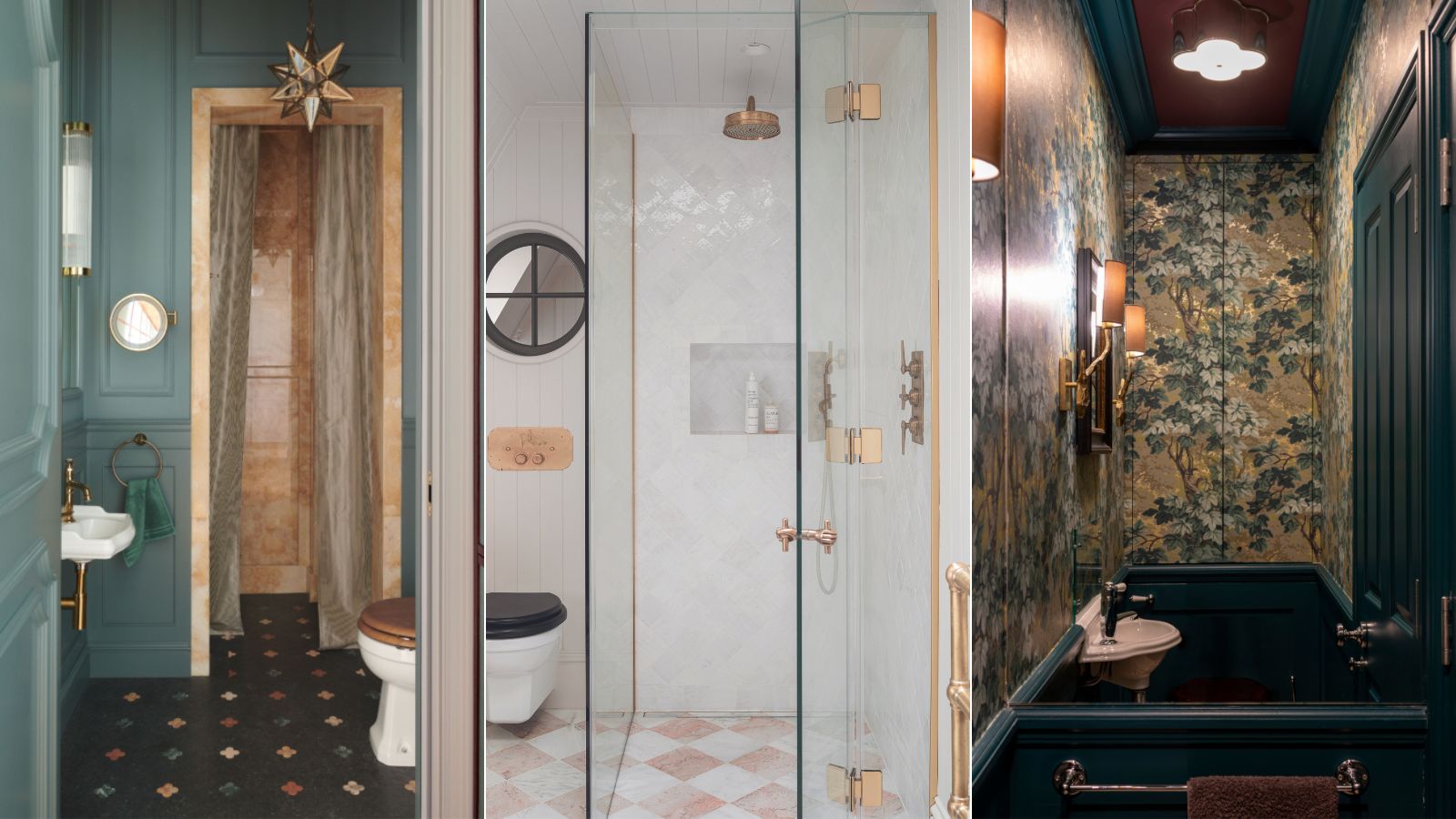

A windowless bathroom is a reality for many of us, and they can be tricky rooms to know how to deal with. Natural light is such an essential aspect of designing a room, and you really notice that when you don't have any to work with.
However, with a bit of know-how about how to tackle light-starved rooms, they can be equally as chic and beautiful as spaces that benefit from a ton of natural light. You have to be more considerate with your decor choices, and everything has to work towards making the bathroom feel as light and bright as possible (although that doesn't necessarily mean always going with a lighter color scheme).
We spoke with designers who have tackled many windowless bathrooms to get their tips on transforming these spaces.
1. Make use of mirrors
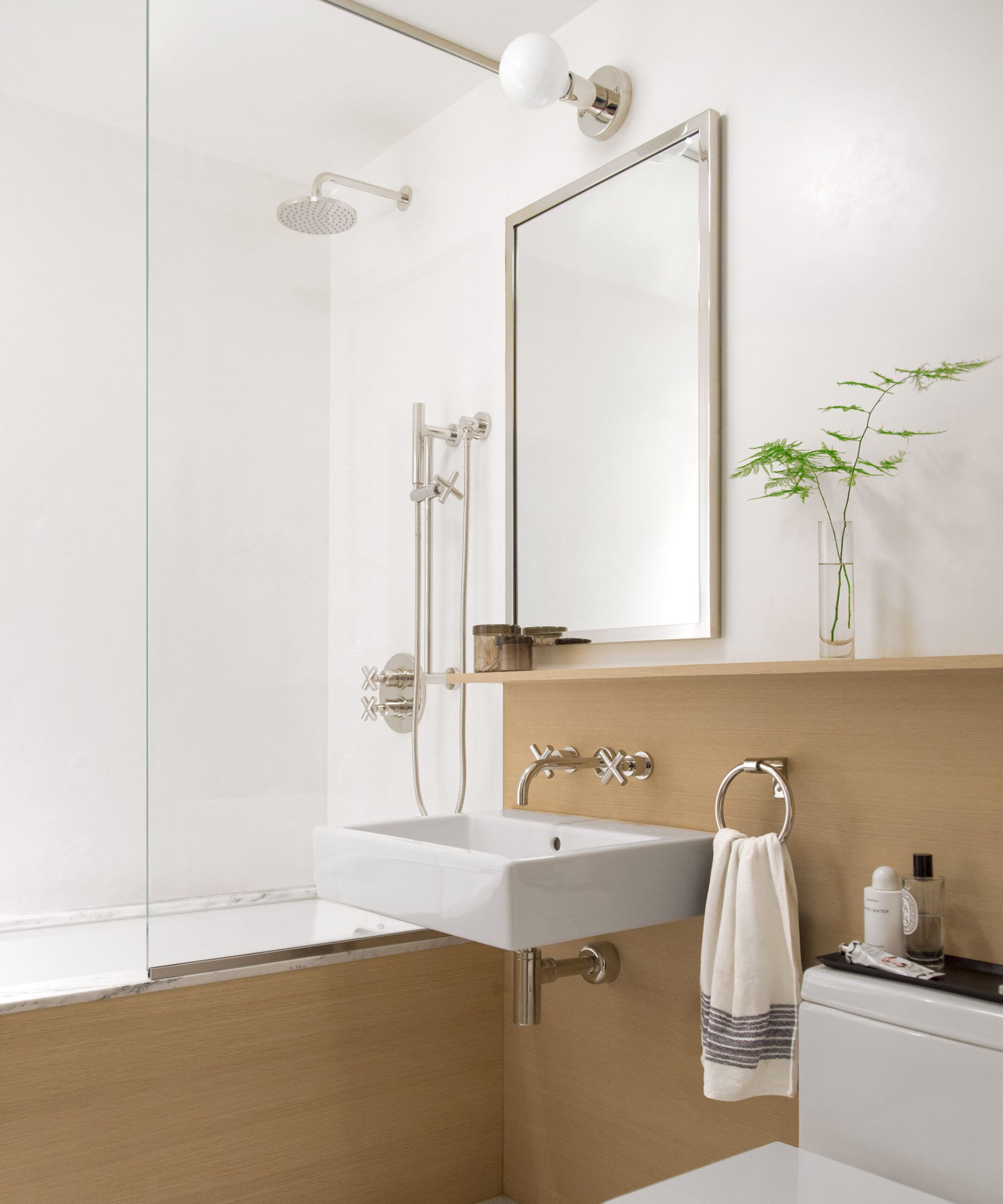
Decorating with mirrors always has space-expanding, light-enhancing effects, but they really show these talents in a windowless room. Windowless bathrooms need mirrors, more than one even if you can fit them in.
'In a windowless bathroom, my biggest piece of advice is to make use of the wall space to add brightness where you can. In any bathroom, a mirror is essential, but when you don't have windows, consider multiple mirrors on the walls to add extra dimension and light.' suggests designer Kathy Kuo.
Jennifer Davis agrees that 'Strategic placement of mirrors is another invaluable technique. Mirrors can effectively reflect light, creating a sense of spaciousness in the room. For a sleek, space-enhancing touch, consider a built-in floating vanity with discreet under-illumination.'
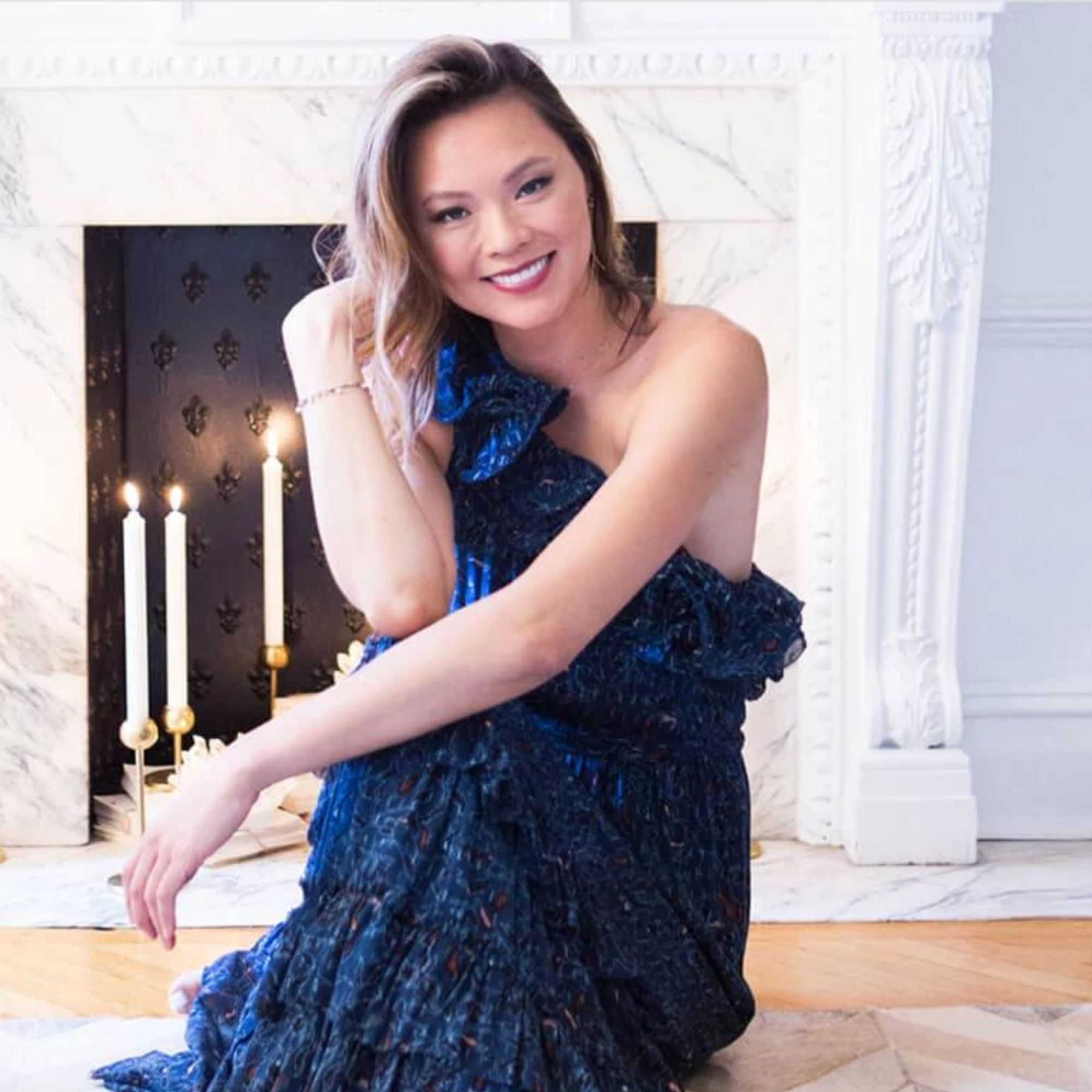
Kathy Kuo is a celebrated interior designer and international guru within the home and lifestyle space. She has 20+ years of experience in the design industry.
2. Embrace the darkness
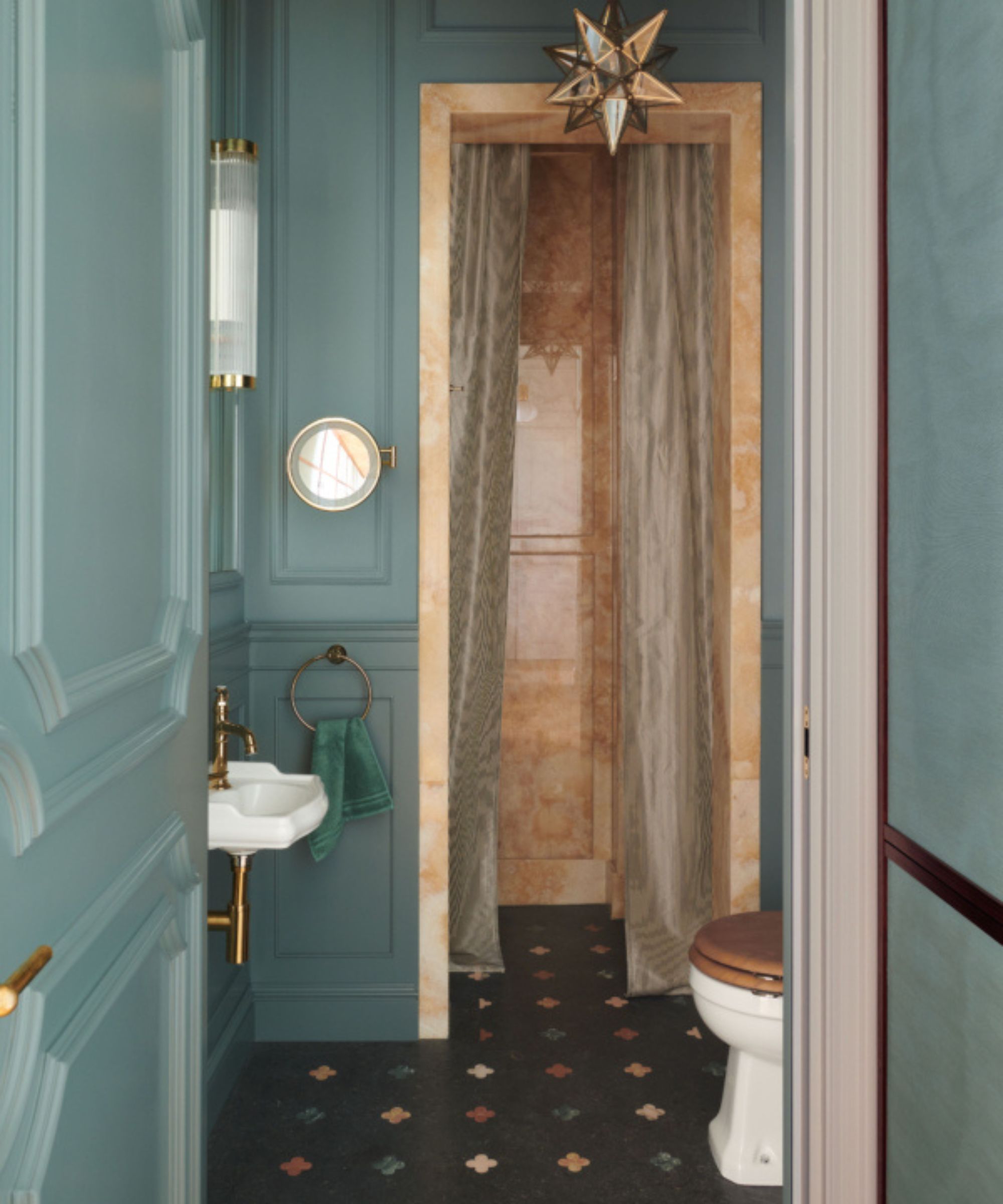
While using lighter colors in a windowless bathroom makes sense, there is the second, and potentially chicer option, to lean into the lack of natural light and go dark and moody with the scheme. Think deep blues, greens, purples, and even black.
'We've designed several windowless bathrooms, and they are undoubtedly tricky. However, in a small powder room, the absence of daylight is an opportunity to turn the space into a jewel box through interesting materials, wallpaper, and shimmering or unusual statement lighting,' suggests Keren Ritcher, co-founder of White Arrow.
'Light colors have the inherent ability to bounce and amplify artificial light, reducing the feeling of confinement,' says Jennifer. 'However, I should note that a moody, dark bathroom without windows can also be captivating, especially if you ensure ample artificial lighting and incorporate plenty of reflective surfaces to maximize light play. The introduction of wallpaper with metallic elements can further enhance this light reflection and we are huge fans of this option!'

Jennifer fell in love with design at a young age and has been working in the industry for over 25 years. She has developed an eye for detail and a talent for creating timeless designs. Jennifer offers a balance of creativity and forward-thinking with a structured, organized, and detailed mentality. Jennifer is driven by her deep passion for design while curating an exceptional client journey, ensuring pure delight from the very beginning to the end.
3. Go for glossy finishes
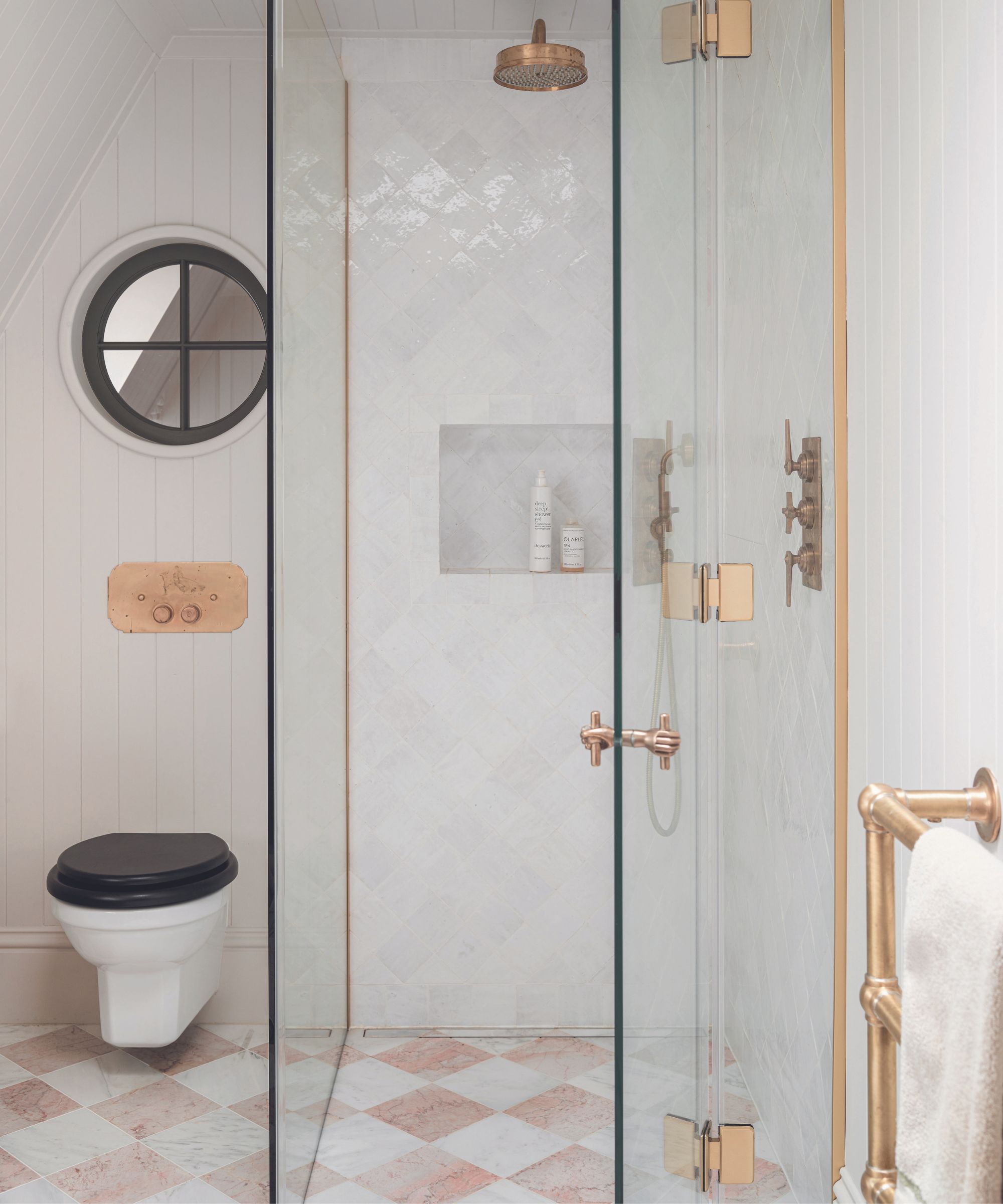
'Reflective surfaces become the silent poets, narrating light's ballet throughout a windowless bathroom,' is how designer Artem Kropovinsky gracefully describes it. While so many bathroom trends right now point towards soft, matte finishes, the exception to this comes in a windowless space. You need to max out reflective surfaces, bouncing as much light around as possible.
'Regardless of your chosen wall color or covering, integrating glossy and glassy materials, such as glass shower doors, high-gloss cabinetry, or reflective tiles, can go a long way in amplifying light reflection and enhancing the overall spaciousness of the bathroom.' adds Jennifer.
Even a bathroom wallpaper can help, opt for something with a sheen, you don't have to go as far as glitter but a flash of metallic will really lift the walls. Likewise, avoid totally matte paint, it can look super dull when there's zero natural light.
4. Layer the lighting
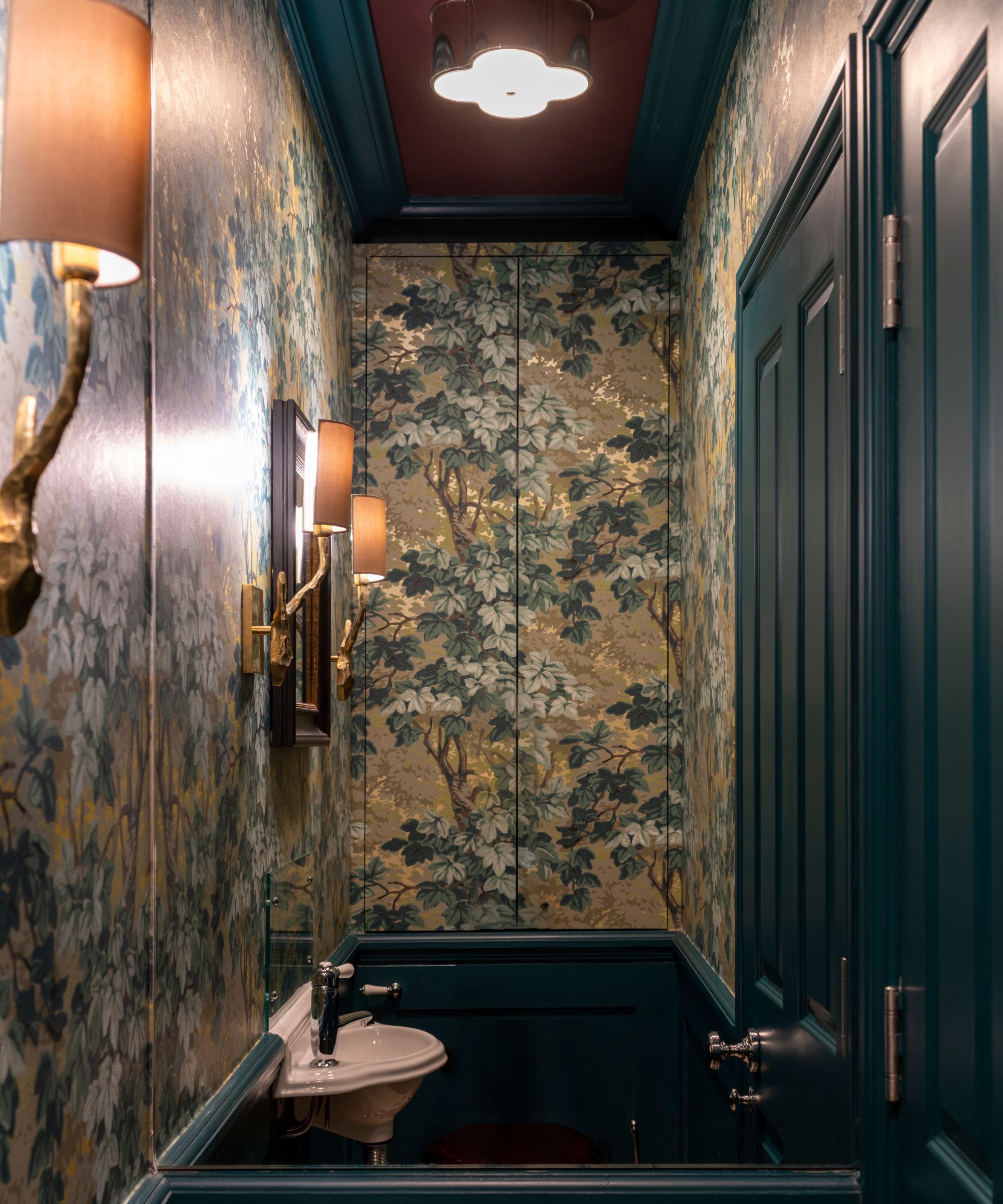
Lighting has to work hard in a windowless bathroom. The best approach is to layer your bathroom lighting so you have lots of sources at different levels. You really want to avoid any harsh, cold overhead lighting.
'When it comes to decorating a windowless bathroom, the choice and placement of lighting are absolutely crucial. I prefer a layered approach, incorporating recessed can lights, wall or pendant sconces, and even decorative ceiling fixtures, provided the room's size allows for it. This layered lighting scheme offers flexibility, allowing you to tailor the illumination as needed throughout the day.' explains Jennifer.
'In a primary bath, where more functionality is needed, layered lighting like overhead lighting and sconces that bounce the light on your face rather than from above (which casts less flattering shadows) is crucial. The absence of natural air flow also makes it essential to consider bathroom fans and add custom attractive grill covers to integrate them into the interiors seamlessly,' adds Keren.
Just to add to that note on ventilation. It's not glamorous, but it's so important in a windowless bathroom. 'For a more functional aspect, make sure that the bathroom is equipped with a proper bath fan! Adequate ventilation is essential to control humidity and maintain a fresh, comfortable environment, making it an essential feature that marries function with style. (I speak from experience on that).' explains Jennifer.
5. Bring in touches of nature

'To infuse a touch of nature, we often include plants into a windowless bathroom, particularly those that thrive in low light conditions, like succulents. These plants bring a refreshing element into the space, promoting a sense of calm.' suggests Jennifer.
There are plenty of plants that thrive in low light, however, if you want something specific, you could always go fake. Indoor trees can really work in a windowless space as they add depth and texture to all the hard surfaces. Dried flowers would also be a more low-maintenance option, hang them in bunches around the sink area, or in vases on the vanity.
Windowless bathrooms are not the easiest to decorate, there is no denying that. But with so many interior design trends and styles based on spaces that have unlimited amounts of natural light, we are so used to seeing the lack of light as this massive issue to have to overcome.
However, dark rooms can be the perfect opportunity to be more experimental with your decor, have fun with color and patterns, and finishes. Painting these spaces some version of white, and filling it with white tiles and white fixtures is just not the way to go - the space will end up looking cold and stark.
Sign up to the Homes & Gardens newsletter
Design expertise in your inbox – from inspiring decorating ideas and beautiful celebrity homes to practical gardening advice and shopping round-ups.

I am the Head of Interiors at Homes & Gardens. I started off in the world of journalism in fashion and luxury travel and then landed my first interiors role at Real Homes and have been in the world of interior design ever since. Prior to my role at H&G I was the digital editor at Livingetc, from which I took a sabbatical to travel in my self-converted van (not as glamorous as decorating a home, but very satisfying). A year later, and with lots of technical DIY lessons learned I am back to writing and editing, sometimes even from the comfort of my home on wheels.
-
 This simple marble hack elevates my budget-friendly wooden kitchen countertops and prevents the dreaded water damage for way less than you’d think
This simple marble hack elevates my budget-friendly wooden kitchen countertops and prevents the dreaded water damage for way less than you’d thinkThis design trick looks expensive, solves a problem, and was the easiest decision I made during my kitchen reno
By Charlotte Olby Published
-
 Emily Blunt gifted Cillian Murphy this $545 pillow – she's 'obsessed' with these luxury pillows, and frankly, so are we
Emily Blunt gifted Cillian Murphy this $545 pillow – she's 'obsessed' with these luxury pillows, and frankly, so are weThe Oppenheimer stars sleep on this ultra-luxe goose down pillow – here's why we love it – plus our affordable alternatives from $35
By Sophie Edwards Published